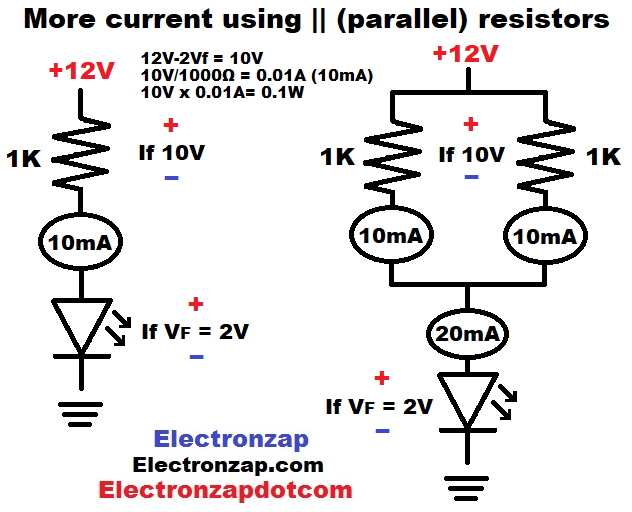Table of Contents
When you add resistors in parallel, you actually get more current for a given voltage.

Adding a parallel resistor always means that…
- There is less equivalent resistance.
- There is more equivalent conduction.
10 volts across a 1,000 ohm resistor will pass 0.010 amps of current. That’s usually refereed to as 10 milliamps.
If you put 10V across two 1,000Ω resistors that are next to each other (not in series), then each of them will pass 10mA of current. Giving a total of 20mA of current.
Video:
To support this site, check out the following links:
Art of electronics is easily my favorite learning electronics book. It helps a lot to already be familiar with basic electronics while studying it. It inspires many of my demonstration circuits. An affiliate link ad that supports this site.
- Become a Patron!
- Check out my YouTube videos! https://www.youtube.com/c/Electronzap/videos
- Products I used in my videos or otherwise think look like a good buy. As an Amazon associate, I earn from qualifying purchases. https://www.amazon.com/shop/electronzapdotcom
- Information on this site is not guaranteed to be accurate. Always consult the manufacturer info/datasheet of parts you use. Research the proper safety precautions for everything you do.
- Electronzap is a participant in the Amazon Services LLC Associates Program, an affiliate advertising program designed to provide a means for sites to earn advertising fees by advertising and linking to amazon.com.